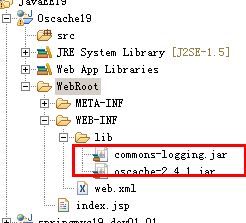- 深入剖析Spring MVC
雾缘枯
springmvcjava
一、SpringMVC概述1.什么是SpringMVC?SpringMVC是基于Spring框架的Web框架,它实现了MVC设计模式,将应用程序分为三个核心部分:Model:封装应用程序的数据和业务逻辑。View:负责渲染数据(通常是HTML页面)。Controller:处理用户请求并协调Model和View。2.SpringMVC的优势松耦合:通过清晰的职责分离,降低代码的耦合度。灵活性:支持多
- Spring MVC 对象转换器:初级开发者入门指南
干中学26
springmvcjava
SpringMVC对象转换器:初级开发者入门指南为什么需要对象转换器?在Web应用中,我们经常需要处理不同类型的对象。例如:前端数据到后端对象:用户通过表单提交的数据通常是HttpServletRequest对象,我们需要将其转换为Java对象(如POJO)以便进行业务处理。后端对象到前端展示:在将数据返回给前端时,可能需要将Java对象转换为适合前端展示的格式(如JSON或XML)。对象转换是一
- Spring MVC的控制器是不是单例模式,如果是,有什么问题,怎么决?思维导图 代码示例(java 架构)
用心去追梦
java架构开发语言
SpringMVC控制器的单例模式特性在SpringMVC中,默认情况下控制器(带有@Controller或@RestController注解的类)是按照单例模式创建的。这意味着在整个应用程序生命周期内,只有一个实例会被创建并被所有请求共享。这与Servlet的行为相似,因为Servlet容器也是以单例模式管理Servlet实例的。单例模式的优点:性能优化:减少了对象创建和销毁的开销。资源利用率:
- springboot原理
caihuayuan5
面试题汇总与解析springbootjava后端大数据
springboot原理未使用springboot时,怎样构建web项目(ssm架构的)导入web及其配置,spring,springmvc在web.xml中配置dispatchServlet(前端控制器,作为分发器的作用)配置包扫描路径,让我们的service层,controller层等里面的对象被spring容器进行管理编写controller类部署Tomcat使用了springboot搭建w
- Spring基础知识——笔记整理(一)
豆萌萌 网课大咖
笔记整理springjava
Spring简介Spring是一个轻量级Java开发框架,由RodJohnson创建,目的是为了解决企业级应用开发的业务逻辑层和其他各层的耦合问题。它是一个JavaSE/JavaEE分层的full-stack(一站式)轻量级开源框架,为开发Java应用程序提供全面的基础架构支持。Spring负责基础架构,因此Java开发者可以专注于应用程序的开发。Spring的优点方便解耦,简化开发:Spring
- 开源项目-图书管理系统
代码先觉
开源项目java图书管理系统
哈喽,大家好,今天给大家带来一个图书管理系统系统主要分为图书管理,读者管理,借还管理等模块,可以下载源码了解详情项目简介本图书管理系统基于spring,springmvc,数据库为mysql。前端使用了Bootstrap。系统功能该系统实现读者和管理员登陆,图书的增删改查,读者的增删改查,借还图书,密码修改,卡号挂失,超期提醒等功能。系统登录图书管理读者管理
- @RestController和@RequestBody注解含义
编程就是如此
Java注解java
一、@RestController(一)含义@RestController是SpringFramework中的一个组合注解,主要用于简化创建RESTfulWeb服务的过程。它结合了@Controller和@ResponseBody注解的功能,使得开发者可以更简洁地编写处理HTTP请求的控制器类。(二)用途@Controller:标记一个类为SpringMVC控制器,通常用于处理视图请求。@Resp
- springboot自动配置MVC原理
去海边钓猪
springbootspringspringbootspringmvc
目录springboot自动配置MVC原理分析内容协商视图解析源码,加入我们自己的视图解析器。横向拓展功能springboot自动配置MVC原理springboot官方文档对springboot的MVC配置原理是这么说明的:官方说明SpringMVCAuto-configuration//SpringBoot为SpringMVC提供了自动配置,它可以很好地与大多数应用程序一起工作。SpringBo
- Spring MVC中ViewControllerRegistry的使用与原理
t0_54program
springmvcjava个人开发
在SpringMVC框架中,ViewControllerRegistry是一个非常实用的工具,它可以帮助我们快速地将URL路径直接映射到视图名称,而无需编写额外的控制器代码。本文将通过详细解析ViewControllerRegistry的工作原理以及一些实际的代码示例,帮助读者更好地理解和使用这一功能。一、ViewControllerRegistry简介ViewControllerRegistry
- 深入理解SpringMVC:构建登录功能的Web应用
就念
本文还有配套的精品资源,点击获取简介:本文详细介绍了如何使用SpringMVC框架构建一个具有登录功能的Web应用程序。文章探讨了SpringMVC的核心功能,事务管理的重要性,SpringJDBC在数据库操作中的应用,以及Junit在单元测试中的作用。实例中包含了一个Web应用必需的库文件和数据库脚本,强调了MyEclipse作为IDE的便利性。通过本实例,读者可以深入了解SpringMVC框架
- 将SSM(Spring + SpringMVC + MyBatis) + JSP项目中的Spring重构为Spring Boot
Pan's pidr
Java后端springspringbootjava
整体思路参考这篇博客:https://blog.csdn.net/xiaocxyczh/article/details/78681374SpringMVC到SpringBoot的简化之路https://juejin.cn/post/6844903573453537294SpringBoot与SpringMVC是两种不同的配置方式,一种是使用starter启动器来完成自动配置,另一种是在xml中进行
- 达内-Spring+SpringMVC+MyBatis框架考试复习
信电
JavaWeb及框架spring
第一部分:Spring框架概述、Spring、IOC、单例、多例、依赖注入文章目录一、Spring概述+约束引入1框架概述2创建的框架3Spring框架概述4IOC的入门案例(环境、约束)二、IOC基本概念和原理1IOC和DI的概念2创建IOC的例子3IOC的实现原理4IOC获取对象的方式三、Spring创建对象的方式四、单例模式和多例模式五、懒加载六、Spring容器的初始化和销毁七、DI依赖注
- 【纯干货】SSM(Spring + SpringMVC + MyBatis)环境搭建
Chin_Yuu
mybatisspringjavaservlet
目录什么是SSM?SSM(Spring+SpringMVC+MyBatis)环境搭建1.导入依赖2.搭建Spring整合MyBatis环境MyBatis配置类根据业务测试环境的搭建3.加入SpringMVC配置类书写服务器和应用控制器测试SpringMVC的环境总结SSM框架的优点:什么是SSM?SSM框架,是Spring+SpringMVC+MyBatis的缩写,这个是继SSH之后,目前比较主流
- EJB构件
Wlq0415
系统架构系统架构
EJB(EnterpriseJavaBeans)构件是Java平台企业版(JavaEE)中用于构建分布式企业级应用程序的核心组件。EJB提供了一种简化的方式,使得开发者可以创建可移植的、安全的、可伸缩的、事务性的、并发的组件,这些组件可以运行在支持JavaEE的服务器上。EJB构件主要可以分为以下三类:会话Bean(SessionBean):会话Bean用于实现业务逻辑,可以分为有状态会话Bean
- 学习 `@PreDestroy`:Java EE/Jakarta EE 生命周期回调
和烨
其它学习java-eejava
学习`@PreDestroy`:JavaEE/JakartaEE生命周期回调前言1.什么是`@PreDestroy`?2.`@PreDestroy`的用途3.使用`@PreDestroy`的条件4.代码示例运行结果:5.`@PreDestroy`的调用时机6.注意事项7.实际应用场景场景1:数据库连接管理场景2:文件资源释放8.总结前言在JavaEE(EnterpriseEdition)和Jaka
- JavaEE进阶知识学习-----定时任务调度Quartz-4
四川码匠
QuartzJAVA进阶学习Quartz任务调度
Quartz和SpringMVC,Spring整合1.Quartz依赖的包如下:org.springframeworkspring-context-support${spring.version}org.springframeworkspring-tx${spring.version}org.quartz-schedulerquartz2.2.3使用Quartz配置作业的方式第一种:MethodI
- SpringMVC中spring-config.xml和web.xml配置
W厚积薄发
小工具web.xml模板
web.xml配置模板springmvcorg.springframework.web.servlet.DispatcherServletcontextConfigLocationclasspath:springmvc-config3.xml1springmvc/CharacterEncodingFilterorg.springframework.web.filter.CharacterEncod
- 手动配置springMVC4的方法
架构默片
javajavaspringMVC4springMVC
手动配置springMVC4的方法一开始网上查了N多文章都是拿maven装的,而且配置文件都一堆一堆的特别乱,不容易让人明白,所以这里提供一个最基本的HELLOWORLD创建一个动态的WEB工程DnamicWebProbject导入如下包commons-logging-1.1.3.jarspring-aop-4.0.0.RELEASE.jarspring-beans-4.0.0.RELEASE.j
- JAX-WS与JAX-RS比较分析及与SpringMVC集成实现
零度anngle
SpringMVCRestfulspringmvcJAX-RSJAX-WS
1、导言过去几年,REST逐渐成为影响Web框架、Web协议与Web应用设计的重要概念。如果你还不了解REST,那这个简短的介绍将有助你快速掌握REST,此外还可以点击这里了解关于REST的更多信息。现在有越来越多的公司希望能以简单而又贴合Web架构本身的方式公开WebAPI,因此REST变得越来越重要也就不足为奇了。使用Ajax进行通信的富浏览器端也在朝这个目标不断迈进。这个架构原则提升了万维网
- Java(JavaEE)学习线路图
太阳上的雨天
JAVAJAVA
Java学习线路图Java教程Java教程Java简介Java开发环境配置Java基础语法Java对象和类Java基本数据类型Java变量类型Java修饰符Java运算符Java循环结构Java分支结构JavaNumber类JavaCharacter类JavaString类JavaStringBuffer和StringBuilder类Java数组Java日期和时间Java正则表达式Java方法Ja
- 基于微信小程序的电影院订票选座系统的设计与实现,SSM+Vue+毕业论文+开题报告+任务书+指导搭建视频
初尘屿风
Javaweb毕业设计初尘屿风微信小程序vue.js小程序
本系统包含用户、管理员两个角色。用户角色:注册登录、查看首页电影信息推荐、查看电影详情并进行收藏预定、查看电影资讯、在线客服、管理个人订单等。管理员角色:登录后台、管理电影类型、管理放映厅信息、管理电影信息、管理用户信息、管理订单等。运行环境jdk8+mysql+IntelliJIDEA+maven3+微信开发者工具项目技术Spring+SpringMvc+Mybatis+html+css+js+
- Spring 核心技术解析【纯干货版】- XIV:Spring 消息模块 Spring-Jms 模块精讲
栗筝i
栗筝i的Java技术栈#Java框架-专栏spring数据库java
在现代分布式系统中,消息队列(MessageQueue,MQ)扮演着至关重要的角色,它不仅能够解耦系统各个模块,还能提升系统的可扩展性和可靠性。JMS(JavaMessageService)作为JavaEE规范中的一部分,为Java应用提供了一套标准的消息通信API。然而,JMS原生API相对复杂,涉及较多底层操作,而Spring-JMS模块的出现极大地简化了JMS在Spring应用中的使用,使得
- 设计模式 笔记10 | 适配器模式 在源码中的应用 | Spring源码的 AOP 注册中心存储了不同的适配器实现 | SpringMVC源码doDisPatch方法里的 HandlerAdapter
「已注销」
设计模式设计模式适配器模式spring
文章目录一、适配器模式知识回顾二、类适配器使用案例之拓展登陆业务2.1模拟登陆的旧系统2.2旧系统拓展【类适配器】2.3旧系统拓展【接口适配器】三、适配器模式在Spring源码中的应用四、SpringMVC中的适配器模式五、总结参考资料一、适配器模式知识回顾适配器定义:将一个类的接口转换成另一种目标接口,使得原本由于接口不兼容而不能一起工作的类能一起工作适配器分类:类结构型模式(耦合读较高)和对象
- Java笔记——Java的三大体系架构:深入剖析Java的三大体系架构
啊健的影子
java笔记架构
Java的三大体系架构概述JavaSEJavaSE的主要特点和应用场景JavaSE中的核心API和功能JavaSE的优缺点JavaSE的主要特点和应用场景JavaSE中的核心API和功能JavaSE的优缺点JavaEEJavaEE的主要特点和应用场景JavaEE中的核心API和功能JavaEE的优缺点JavaEE的主要特点和应用场景JavaEE中的核心API和功能JavaEE的优缺点JavaMEJ
- Spring Boot集成Spring MVC:快速搭建Web应用
软件职业规划
springspringspringbootmvc
在SpringBoot项目中集成SpringMVC是一个非常常见的需求。SpringBoot已经内置了对SpringMVC的支持,因此集成过程相对简单。1.创建SpringBoot项目你可以通过以下方式创建一个SpringBoot项目:使用SpringInitializr(start.spring.io)在线生成项目。使用IDE(如IntelliJIDEA或Eclipse)的SpringBoot插
- SpringBoot Spring MVC
深度视觉机器
SpringBootspringboot
一、初始SpringMVC1.1什么是SpringMVC1、SpringMVC是Spring框架的一部分 SpringMVC是一种轻量级的、基于MVC的Web层应用框架。SpringMVC通过把模型-视图-控制器分离,将Web层进行职责解耦,把复杂的web应用分成逻辑清晰的几部分,简化开发,减少出错,方便组内开发人员之间的配合。
- SpringBoot中实现WebMvcConfigurer,配置跨域无效
TNTnine
Springspringbootjava后端
跨域配置如下:@ConfigurationpublicclassCorsConfigimplementsWebMvcConfigurer{/***跨域配置*-Access-Control-Allow-Origin的介绍:*-https://blog.csdn.net/MicroAnswer/article/details/102913571*-SpringMVC路径匹配规则:*-1、https:/
- Spring MVC 的核心以及执行流程
小马不敲代码
JAVA相关框架springmvcjava
SpringMVC的核心SpringMVC是Spring框架中的一个重要模块,它采用了经典的MVC(Model-View-Controller)设计模式。MVC是一种软件架构的思想,它将软件按照模型(Model)、视图(View)和控制器(Controller)三个核心组件来划分,以提高应用程序的可维护性、可测试性和可扩展性。•模型(Model):表示应用程序中的数据和业务逻辑。在SpringMV
- validation 实现参数校验
程序员老王wd
java
简述在Java中,参数校验是非常重要的,因为它可以确保方法或函数在执行时接收到的参数是合法的,有效的,从而提高代码的健壮性和安全性。参数校验可以防止无效的输入导致的异常或错误,同时也能减少因为无效参数导致的安全漏洞Java中的参数校验可以通过手动编写校验逻辑来实现,但这样会增加代码的复杂度和重复性。为了简化参数校验的实现,可以使用ValidationAPI,它是JavaEE平台的一部分,提供了一套
- SpringMVC的工作原理
冰糖心书房
2025Java面试系列java
SpringMVC工作原理详解SpringMVC是Spring框架中用于构建Web应用程序的模块。它基于MVC(Model-View-Controller)设计模式,提供了一种清晰且可维护的方式来处理Web请求和生成响应。以下是SpringMVC工作原理的详细说明,包括各个组件的作用以及它们如何协同工作:1.用户发起请求(BrowserRequest):用户在浏览器输入URL,发起一个HTTP请求
- HQL之投影查询
归来朝歌
HQLHibernate查询语句投影查询
在HQL查询中,常常面临这样一个场景,对于多表查询,是要将一个表的对象查出来还是要只需要每个表中的几个字段,最后放在一起显示?
针对上面的场景,如果需要将一个对象查出来:
HQL语句写“from 对象”即可
Session session = HibernateUtil.openSession();
- Spring整合redis
bylijinnan
redis
pom.xml
<dependencies>
<!-- Spring Data - Redis Library -->
<dependency>
<groupId>org.springframework.data</groupId>
<artifactId>spring-data-redi
- org.hibernate.NonUniqueResultException: query did not return a unique result: 2
0624chenhong
Hibernate
参考:http://blog.csdn.net/qingfeilee/article/details/7052736
org.hibernate.NonUniqueResultException: query did not return a unique result: 2
在项目中出现了org.hiber
- android动画效果
不懂事的小屁孩
android动画
前几天弄alertdialog和popupwindow的时候,用到了android的动画效果,今天专门研究了一下关于android的动画效果,列出来,方便以后使用。
Android 平台提供了两类动画。 一类是Tween动画,就是对场景里的对象不断的进行图像变化来产生动画效果(旋转、平移、放缩和渐变)。
第二类就是 Frame动画,即顺序的播放事先做好的图像,与gif图片原理类似。
- js delete 删除机理以及它的内存泄露问题的解决方案
换个号韩国红果果
JavaScript
delete删除属性时只是解除了属性与对象的绑定,故当属性值为一个对象时,删除时会造成内存泄露 (其实还未删除)
举例:
var person={name:{firstname:'bob'}}
var p=person.name
delete person.name
p.firstname -->'bob'
// 依然可以访问p.firstname,存在内存泄露
- Oracle将零干预分析加入网络即服务计划
蓝儿唯美
oracle
由Oracle通信技术部门主导的演示项目并没有在本月较早前法国南斯举行的行业集团TM论坛大会中获得嘉奖。但是,Oracle通信官员解雇致力于打造一个支持零干预分配和编制功能的网络即服务(NaaS)平台,帮助企业以更灵活和更适合云的方式实现通信服务提供商(CSP)的连接产品。这个Oracle主导的项目属于TM Forum Live!活动上展示的Catalyst计划的19个项目之一。Catalyst计
- spring学习——springmvc(二)
a-john
springMVC
Spring MVC提供了非常方便的文件上传功能。
1,配置Spring支持文件上传:
DispatcherServlet本身并不知道如何处理multipart的表单数据,需要一个multipart解析器把POST请求的multipart数据中抽取出来,这样DispatcherServlet就能将其传递给我们的控制器了。为了在Spring中注册multipart解析器,需要声明一个实现了Mul
- POJ-2828-Buy Tickets
aijuans
ACM_POJ
POJ-2828-Buy Tickets
http://poj.org/problem?id=2828
线段树,逆序插入
#include<iostream>#include<cstdio>#include<cstring>#include<cstdlib>using namespace std;#define N 200010struct
- Java Ant build.xml详解
asia007
build.xml
1,什么是antant是构建工具2,什么是构建概念到处可查到,形象来说,你要把代码从某个地方拿来,编译,再拷贝到某个地方去等等操作,当然不仅与此,但是主要用来干这个3,ant的好处跨平台 --因为ant是使用java实现的,所以它跨平台使用简单--与ant的兄弟make比起来语法清晰--同样是和make相比功能强大--ant能做的事情很多,可能你用了很久,你仍然不知道它能有
- android按钮监听器的四种技术
百合不是茶
androidxml配置监听器实现接口
android开发中经常会用到各种各样的监听器,android监听器的写法与java又有不同的地方;
1,activity中使用内部类实现接口 ,创建内部类实例 使用add方法 与java类似
创建监听器的实例
myLis lis = new myLis();
使用add方法给按钮添加监听器
- 软件架构师不等同于资深程序员
bijian1013
程序员架构师架构设计
本文的作者Armel Nene是ETAPIX Global公司的首席架构师,他居住在伦敦,他参与过的开源项目包括 Apache Lucene,,Apache Nutch, Liferay 和 Pentaho等。
如今很多的公司
- TeamForge Wiki Syntax & CollabNet User Information Center
sunjing
TeamForgeHow doAttachementAnchorWiki Syntax
the CollabNet user information center http://help.collab.net/
How do I create a new Wiki page?
A CollabNet TeamForge project can have any number of Wiki pages. All Wiki pages are linked, and
- 【Redis四】Redis数据类型
bit1129
redis
概述
Redis是一个高性能的数据结构服务器,称之为数据结构服务器的原因是,它提供了丰富的数据类型以满足不同的应用场景,本文对Redis的数据类型以及对这些类型可能的操作进行总结。
Redis常用的数据类型包括string、set、list、hash以及sorted set.Redis本身是K/V系统,这里的数据类型指的是value的类型,而不是key的类型,key的类型只有一种即string
- SSH2整合-附源码
白糖_
eclipsespringtomcatHibernateGoogle
今天用eclipse终于整合出了struts2+hibernate+spring框架。
我创建的是tomcat项目,需要有tomcat插件。导入项目以后,鼠标右键选择属性,然后再找到“tomcat”项,勾选一下“Is a tomcat project”即可。具体方法见源码里的jsp图片,sql也在源码里。
补充1:项目中部分jar包不是最新版的,可能导
- [转]开源项目代码的学习方法
braveCS
学习方法
转自:
http://blog.sina.com.cn/s/blog_693458530100lk5m.html
http://www.cnblogs.com/west-link/archive/2011/06/07/2074466.html
1)阅读features。以此来搞清楚该项目有哪些特性2)思考。想想如果自己来做有这些features的项目该如何构架3)下载并安装d
- 编程之美-子数组的最大和(二维)
bylijinnan
编程之美
package beautyOfCoding;
import java.util.Arrays;
import java.util.Random;
public class MaxSubArraySum2 {
/**
* 编程之美 子数组之和的最大值(二维)
*/
private static final int ROW = 5;
private stat
- 读书笔记-3
chengxuyuancsdn
jquery笔记resultMap配置ibatis一对多配置
1、resultMap配置
2、ibatis一对多配置
3、jquery笔记
1、resultMap配置
当<select resultMap="topic_data">
<resultMap id="topic_data">必须一一对应。
(1)<resultMap class="tblTopic&q
- [物理与天文]物理学新进展
comsci
如果我们必须获得某种地球上没有的矿石,才能够进行某些能量输出装置的设计和建造,而要获得这种矿石,又必须首先进行深空探测,而要进行深空探测,又必须获得这种能量输出装置,这个矛盾的循环,会导致地球联盟在与宇宙文明建立关系的时候,陷入困境
怎么办呢?
- Oracle 11g新特性:Automatic Diagnostic Repository
daizj
oracleADR
Oracle Database 11g的FDI(Fault Diagnosability Infrastructure)是自动化诊断方面的又一增强。
FDI的一个关键组件是自动诊断库(Automatic Diagnostic Repository-ADR)。
在oracle 11g中,alert文件的信息是以xml的文件格式存在的,另外提供了普通文本格式的alert文件。
这两份log文
- 简单排序:选择排序
dieslrae
选择排序
public void selectSort(int[] array){
int select;
for(int i=0;i<array.length;i++){
select = i;
for(int k=i+1;k<array.leng
- C语言学习六指针的经典程序,互换两个数字
dcj3sjt126com
c
示例程序,swap_1和swap_2都是错误的,推理从1开始推到2,2没完成,推到3就完成了
# include <stdio.h>
void swap_1(int, int);
void swap_2(int *, int *);
void swap_3(int *, int *);
int main(void)
{
int a = 3;
int b =
- php 5.4中php-fpm 的重启、终止操作命令
dcj3sjt126com
PHP
php 5.4中php-fpm 的重启、终止操作命令:
查看php运行目录命令:which php/usr/bin/php
查看php-fpm进程数:ps aux | grep -c php-fpm
查看运行内存/usr/bin/php -i|grep mem
重启php-fpm/etc/init.d/php-fpm restart
在phpinfo()输出内容可以看到php
- 线程同步工具类
shuizhaosi888
同步工具类
同步工具类包括信号量(Semaphore)、栅栏(barrier)、闭锁(CountDownLatch)
闭锁(CountDownLatch)
public class RunMain {
public long timeTasks(int nThreads, final Runnable task) throws InterruptedException {
fin
- bleeding edge是什么意思
haojinghua
DI
不止一次,看到很多讲技术的文章里面出现过这个词语。今天终于弄懂了——通过朋友给的浏览软件,上了wiki。
我再一次感到,没有辞典能像WiKi一样,给出这样体贴人心、一清二楚的解释了。为了表达我对WiKi的喜爱,只好在此一一中英对照,给大家上次课。
In computer science, bleeding edge is a term that
- c中实现utf8和gbk的互转
jimmee
ciconvutf8&gbk编码
#include <iconv.h>
#include <stdlib.h>
#include <stdio.h>
#include <unistd.h>
#include <fcntl.h>
#include <string.h>
#include <sys/stat.h>
int code_c
- 大型分布式网站架构设计与实践
lilin530
应用服务器搜索引擎
1.大型网站软件系统的特点?
a.高并发,大流量。
b.高可用。
c.海量数据。
d.用户分布广泛,网络情况复杂。
e.安全环境恶劣。
f.需求快速变更,发布频繁。
g.渐进式发展。
2.大型网站架构演化发展历程?
a.初始阶段的网站架构。
应用程序,数据库,文件等所有的资源都在一台服务器上。
b.应用服务器和数据服务器分离。
c.使用缓存改善网站性能。
d.使用应用
- 在代码中获取Android theme中的attr属性值
OliveExcel
androidtheme
Android的Theme是由各种attr组合而成, 每个attr对应了这个属性的一个引用, 这个引用又可以是各种东西.
在某些情况下, 我们需要获取非自定义的主题下某个属性的内容 (比如拿到系统默认的配色colorAccent), 操作方式举例一则:
int defaultColor = 0xFF000000;
int[] attrsArray = { andorid.r.
- 基于Zookeeper的分布式共享锁
roadrunners
zookeeper分布式共享锁
首先,说说我们的场景,订单服务是做成集群的,当两个以上结点同时收到一个相同订单的创建指令,这时并发就产生了,系统就会重复创建订单。等等......场景。这时,分布式共享锁就闪亮登场了。
共享锁在同一个进程中是很容易实现的,但在跨进程或者在不同Server之间就不好实现了。Zookeeper就很容易实现。具体的实现原理官网和其它网站也有翻译,这里就不在赘述了。
官
- 两个容易被忽略的MySQL知识
tomcat_oracle
mysql
1、varchar(5)可以存储多少个汉字,多少个字母数字? 相信有好多人应该跟我一样,对这个已经很熟悉了,根据经验我们能很快的做出决定,比如说用varchar(200)去存储url等等,但是,即使你用了很多次也很熟悉了,也有可能对上面的问题做出错误的回答。 这个问题我查了好多资料,有的人说是可以存储5个字符,2.5个汉字(每个汉字占用两个字节的话),有的人说这个要区分版本,5.0
- zoj 3827 Information Entropy(水题)
阿尔萨斯
format
题目链接:zoj 3827 Information Entropy
题目大意:三种底,计算和。
解题思路:调用库函数就可以直接算了,不过要注意Pi = 0的时候,不过它题目里居然也讲了。。。limp→0+plogb(p)=0,因为p是logp的高阶。
#include <cstdio>
#include <cstring>
#include <cmath&










